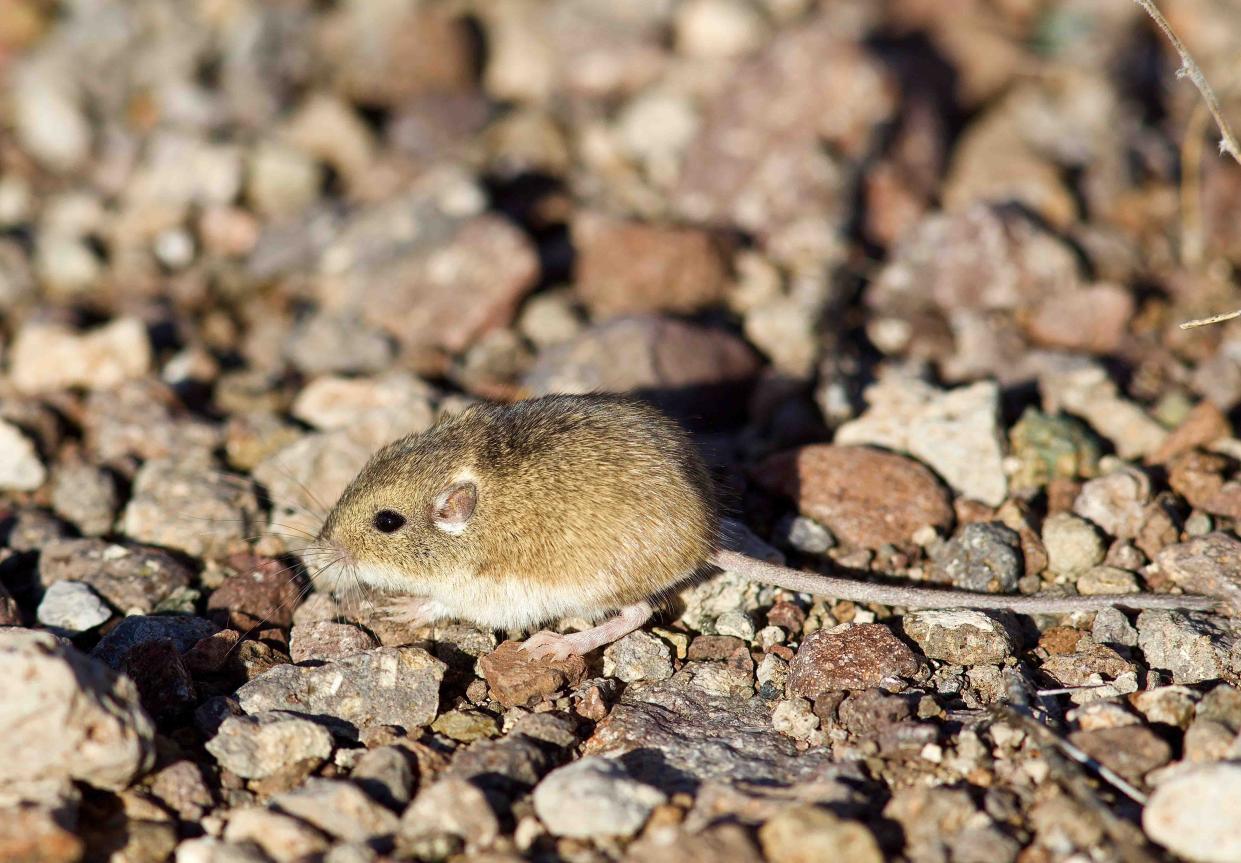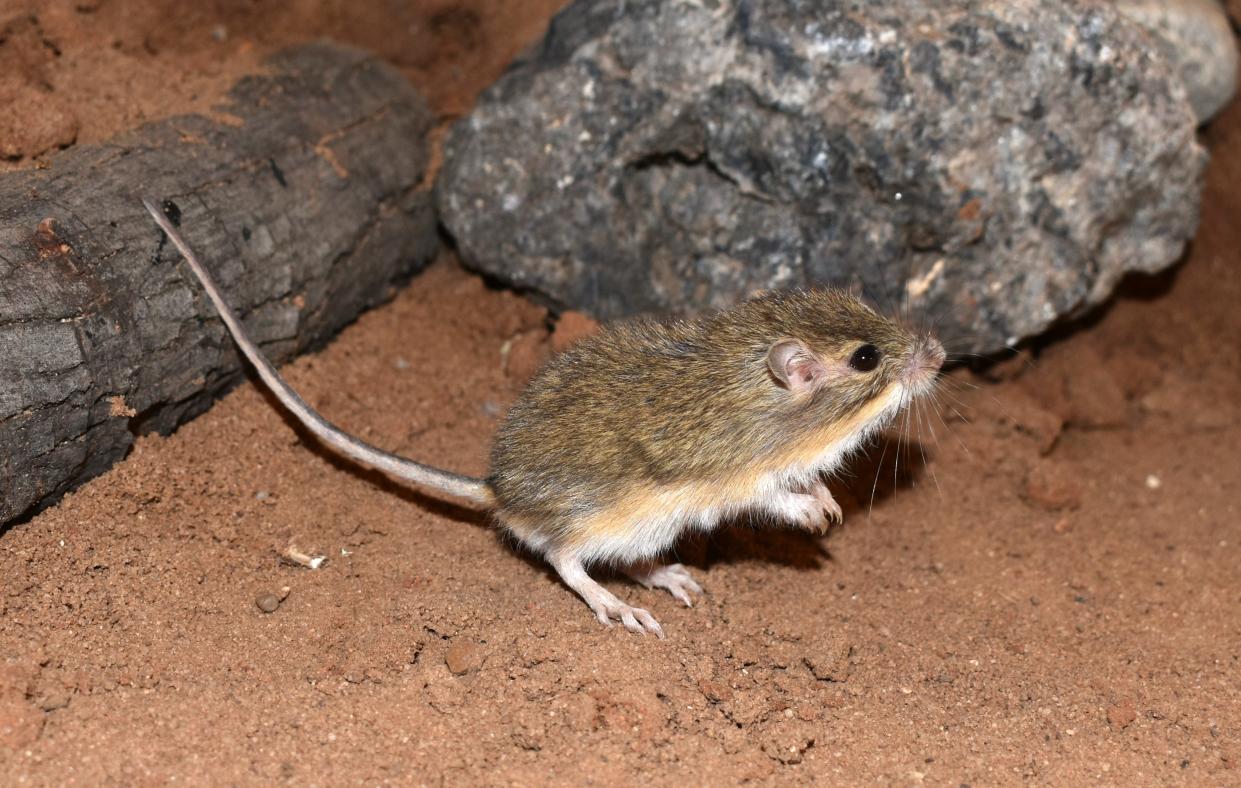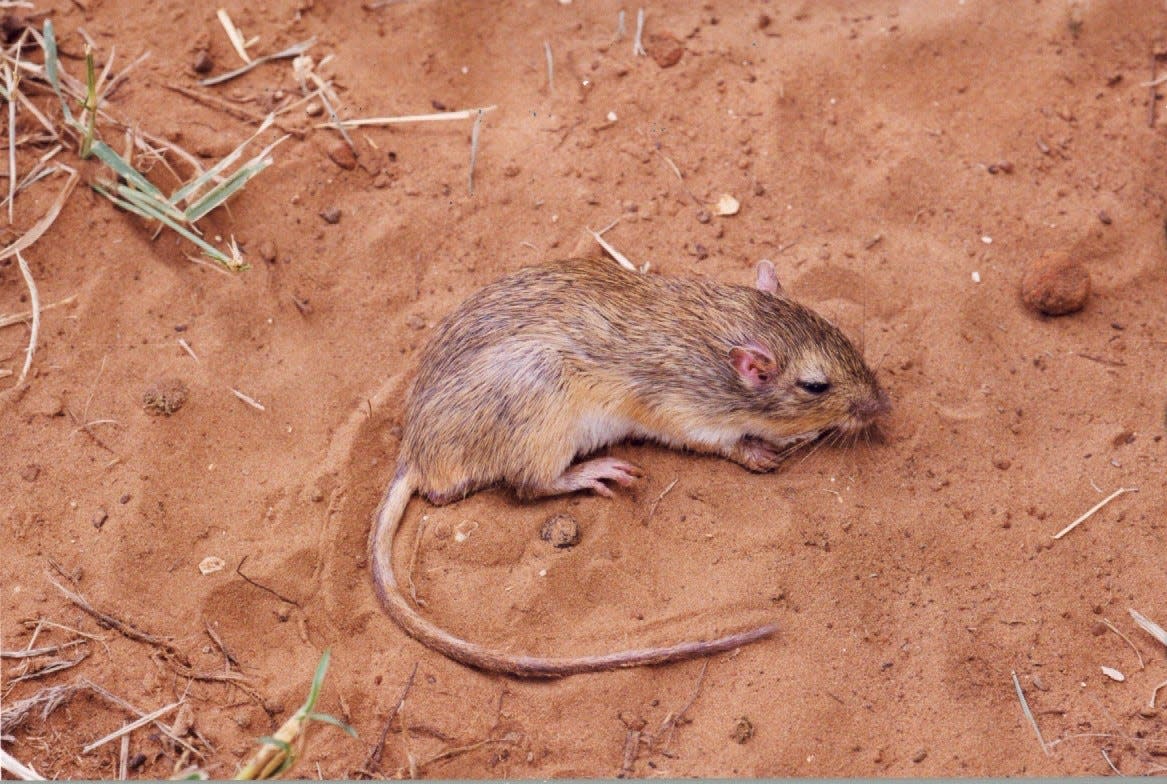Goetze: These little critters live large in the Wichita Falls area
If there was a category for low maintenance, free-living and inconspicuous rodents, then one group that comes to mind are pocket mice of the family Heteromyidae.
The family name translates as “different or other mice” and implies they are unique from other rodents. Indeed, some are different in terms of their ability to survive in sparse habitats and harsh conditions.
The big three
Three species of pocket mice occur in Southwestern Oklahoma and Northcentral Texas.
Two — the Plains pocket mouse and Merriam’s pocket mouse — are diminutive in size and are sometimes referred to as silky pocket mice because they lack bristly hairs in their fur.
But the larger, third species — the hispid pocket mouse — has scattered bristles in its pelage and is approximately twice as large as Plains and Merriam’s pocket mice.

No need for Tupperware. They've got storage covered.
The name pocket mouse is given to these mice because of external, fur-lined cheek pouches used to transport food materials. Pocket mouse heads appear triangular and large compared to their bodies because of the cheek pouches; short, rounded ears; narrow nostrils; and expanded auditory bullae of their skulls.
The look of each
Dorsal fur colors vary from tan to ochraceous — orange — shades, and the dorsum is usually interspersed with black hairs. The Plains pocket mouse has a longer tail and larger hind feet than Merriam’s Pocket Mouse.
Both species have buffy patches behind their ears and small, white spots at the base of each ear. The tails of these two pocket mice are noncrested and uniform in color.
The much larger hispid pocket mouse has coarse, bristly-appearing, tan to ochraceous dorsal fur with mixed black hairs and a distinctly bicolored tail with a dark, dorsal line extending to the tail’s tip. The hispid pocket mouse also has an ochraceous, lateral stripe from the base of its cheeks to the flanks.
The ochraceous band separates the darker dorsal pelage from the white belly and inner legs. The upper incisors of all three species have longitudinal grooves, and all have small, peg-like, upper premolars.
Homey habitats for pocket mice
The Plains pocket mouse occurs in western counties of our region; whereas, Merriam’s pocket mouse and the hispid pocket mouse occur throughout Northcentral Texas and Southwestern Oklahoma. Plains and Merriam’s pocket mice are associated with arid habitats and sparse, low-to-mid height vegetation.
The hispid pocket mouse occurs in these habitats, as-well-as lusher grasslands and edge habitats of pastures and woodlands. All three pocket mice have adapted to human habitat modifications and also inhabit mowed and maintained fence lines, roadsides and graded edges of unpaved roadways.

The Plains pocket mouse prefers sandy soils; whereas, Merriam’s pocket mouse and the hispid pocket mouse can also tolerate clay soils and rocky habitats. Pocket mice avoid areas of dense vegetation and are frequent inhabitants of overgrazed rangelands.
Building a pocket mouse house
Burrows are constructed adjacent to grass clumps, underneath rocks, in loose roadside soils, and around mesquite shrubs and brush. Burrow entrances are a few centimeters in diameter and lack soil mounds. The entrances to hispid pocket mouse burrows are usually oriented vertically to the ground’s surface.
Active burrows are plugged with soil during the daytime. Burrow plugs are slightly below the surface of the entrance and, sometimes, the resident mouse will place a second plug at a deeper level. The Plains pocket mouse constructs simple tunnels with very little enlargement of the tunnel for nesting and food cache chambers.
But Merriam’s pocket mouse and the Hispid pocket mouse add food storage chambers and nesting chambers to their tunnels. Pocket mice also construct shallow, resting and retreat burrows.
Denizens of the night
Pocket mice are nocturnal but occasionally venture out during daylight hours. They may conduct several foraging sessions each night and are primarily granivores: supplementing their diet with small amounts of green vegetation and insects, such as ants, during times of seed scarcity.
Pocket mice can store the equivalent of a day’s rations in their cheek pouches during each foraging episode, which makes their heads appear even larger as their seed-stuffed cheek pouches bulge outward.
What's for supper, pocket-mouse style?
Depending upon species and locations, favored foods include the seeds of many wild grasses such as little barley, mesquite and buffalo grasses, grama grasses, three-awn grasses, bluestems, grass burrs and others.

Seeds of ragweed, burr clover, junipers, mesquite, prickly pear, lazy daisy, sunflowers and other plants are also consumed and/or hoarded in food caches for winter months and lean times. Predators include carnivores such as owls, snakes, bobcats, badgers, coyotes, racoons and skunks.
When startled, the smaller pocket mice often erratically hop about in a manner similar to grasshoppers, but the hispid pocket mouse usually runs to a nearby burrow for refuge.
To drink or not to drink water
Pocket mice can exist for extended periods of time without drinking water, and some species never drink! Their kidneys meet the pocket mouse’s water requirements by salvaging water generated from digesting seeds. This adaptation confers advantages to pocket mice in arid and/or desert-like habitats and contributes to their previously mentioned, low maintenance status.
The lifespan of a pocket mouse
All three pocket mice undergo periods of torpor during colder months and extremely hot days but are otherwise active throughout the year. Gestation periods are short, and each species may produce more than one litter of two to six young each year. However, the approximate life span of a pocket mouse in the wild is usually less than one year.
In contrast, captive individuals may live in terraria for several years as they busily relocate burrows and seed caches — sometimes on a nightly basis!
These seed eaters are often sighted at night as they hop and scurry across lightly traveled roads. Mostly solitary in behavior, pocket mice are gentle and inconspicuous inhabitants of the grasslands and barren areas of our region, and looking for them can be rewarding!

Jim Goetze is a retired professor of biology and former chairperson of the Natural Sciences Department of Laredo College with an avid interest in all aspects of the natural world. He can be contacted at gonorthtxnature@gmail.com.
This article originally appeared on Wichita Falls Times Record News: Goetze: These little critters live large in the Wichita Falls area
